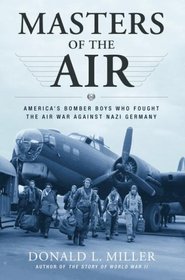Search -
Masters of the Air: America's Bomber Boys Who Fought the Air War Against Nazi Germany
Masters of the Air America's Bomber Boys Who Fought the Air War Against Nazi Germany
Author:
Masters of the AirMasters of the Air is a narrative history of the bomber war in World War Two. The U.S. had two air forces conducting strategic bombing in Europe during the war, the Eighth and the Fifteenth. The Eighth was the more powerful and was the one that bombed Germany. Masters of the Air is the story of the E... more »
Author:
Masters of the AirMasters of the Air is a narrative history of the bomber war in World War Two. The U.S. had two air forces conducting strategic bombing in Europe during the war, the Eighth and the Fifteenth. The Eighth was the more powerful and was the one that bombed Germany. Masters of the Air is the story of the E... more »
ISBN-13: 9780743235457
ISBN-10: 0743235452
Publication Date: 9/25/2007
Pages: 688
Edition: Reprint
Rating: 3
ISBN-10: 0743235452
Publication Date: 9/25/2007
Pages: 688
Edition: Reprint
Rating: 3
4.7 stars, based on 3 ratings
Publisher: Simon & Schuster
Book Type: Paperback
Other Versions: Hardcover, Audio CD
Members Wishing: 18
Reviews: Amazon | Write a Review
Book Type: Paperback
Other Versions: Hardcover, Audio CD
Members Wishing: 18
Reviews: Amazon | Write a Review
Genres:
- History >> Europe >> Germany >> General
- History >> Military >> Aviation
- History >> Military >> General
- History >> Military >> United States >> General
- History >> Military >> World War II >> General




